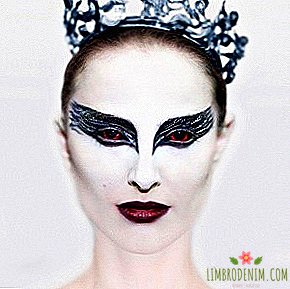We are: What food pictures say on us on instagram
Text: Gayana Demurina
everyday FROM FASHION AND INSTAGRAM we learn in detail about what is happening with our friends. Sharing an impression of what surrounds you is a natural goal of communication, but turning points in our lives do not happen so often, because more common things more often come into view. If a few years ago a direct or obsessive demonstration of every little thing could shock or cause irritation, now few people react emotionally to selfies in the elevator mirror, photographs of legs or pictures of food.
It is important for us not only to remind us of the fact of our existence, but also to report on the right to be who we are.
However, in relation to the last topic, people have always retained some loyalty - if only because food brings great pleasure to most of us. Human interest in food has never been limited solely to its biological function. Thanks to religious rituals, food was often perceived as something sacred and therefore extremely valuable. Art allowed to consider it as a source of inspiration - so, food can be attractive by itself, regardless of our desire or unwillingness to eat it. Food was perceived from a purely aesthetic side already in still lifes of Flemish Renaissance artists.
Nowadays, the admiration for food and the desire to capture it have acquired clear social implications. We take pictures not just some food, but the one that causes the appetite is well-served and can attract the attention of others. If we are going to post a photo of the dish, we censor the pictures, select among the many versions of one song that, in our opinion, will win the audience award. The principle of such a decision is quite understandable: the more colorful and desirable the food looks on it, the more likes and approvals the author will collect. Demonstrating something personal in the public space, we want to receive recognition, confirmation that we and our choice are ready to accept.
Public approval is not the only incentive that encourages us to share something on social networks. No less significant is the need for self-expression. Pictures of our food, just like the image of everyday attire or makeup, reflect tastes, lifestyle, and worldview. It is important for us not only to remind the surroundings about the fact of our existence, but also to report on the right to be who we are (however, the picture in social networks does not always correspond to reality). The desire to show themselves to a wide range of people reflects the name of one of the popular hashtags in instagram - # peace should be understood: we have over a million and a half publications under it.
You can analyze this phenomenon from the psychological and social sides, but you should not ignore the simple fact: we just like what we do. Because it is beautiful and satisfying. It is not by chance that the hashtag #foodporn has gained special popularity in social networks. Comparing nutrition with sex, the same basic need, so often replicated in advertising, popular culture and the media, suggests that the solution of biological problems in both cases fades into the background and the main thing is getting pleasure.
Social network users are increasingly sharing pictures of simple, "human" food, devoid of gloss and aura of elitism.
In the modern world of food photography is not only a way to tell about yourself, having captured your breakfast, but also a serious marketing tool, real art. Restaurant business and specialized publications no longer do without the services of food stylists, responsible for how the dish looks like during the shoot. Amateur photographers began to listen more to the advice of professionals, various culinary blogs appeared with vivid photos and step-by-step recipes that promise to teach you to do just as tasty and beautiful. In addition, various culinary applications are now available, which not only collect recipes, but also reinforce them with beautiful pictures for inspiration.
The abundance and variety of mouth-watering images of food could not but affect the taste habits. According to the study of the network of British supermarkets Waitrose, “proper” nutrition turned into a real mainstream, and the products that are commonly associated with it - chia seeds, coconut flour, algae and vegan products - became the best-selling in 2016. The fact that now a healthy lifestyle is in trend, can be called in part the merit of numerous blogs about nutrition and sports. Of course, the benefits of such resources are great - provided that they are engaged in professionals. According to experts, literate popularization of knowledge about the basics of healthy eating can dispel stereotypes and myths about food and even prevent the development of chronic diseases.
Going on the path of a healthy lifestyle, it is important to understand for whom and for what it is done. In attempts to win approval, we often follow imposed behaviors. "Do as you should, and everyone will love you" is a dubious, but traditional installation. In the virtual space, we are often evaluated by people whom we do not see or even do not know. Sometimes strangers allow themselves tactless remarks about our appearance, hobbies and food. For some supporters of fitness fascism, it seems that only “correct” and beautiful food is worthy of publication, and those who do not follow this canon are subject to shaming. Fortunately, in recent times, users of social networks are increasingly sharing pictures of simple, "human" food, devoid of gloss and aura of elitism. And, judging by the number of subscribers of the "Beautiful girls and shaurma" public, this trend is gaining momentum. On the other hand, it proves that the most comfortable way to talk about food without frills and restrictions while irony remains, and in this matter often trust those who fit the social standards of appearance.
Social media forms not only our interaction with society, but also relationships with ourselves, with our body. Often, the images that are created by popular bloggers seem so desirable to us that we change our own habits, body, and character according to the imposed standard. Such experiments on themselves can lead to psychological difficulties, including eating disorders. Teenagers are especially susceptible. At the same time, the image in social networks rarely shows the real state of affairs. Sometimes posting beautiful photographs of nutritious food doesn’t mean it was eaten. It seems that a person is responsible for nutrition, but behind this there may be an eating disorder.
Tasty does not always mean harmful, but conditionally useful may not be so
“When a person every day lays out a detailed report on what, when and in what quantities he ate, from a certain point it can become mania,” says clinical psychologist Irina Lopatukhina, author of books and articles on the therapy of eating disorders. “ such reports can be found not in the social media feed, but in more closed spaces - in VKontakte communities or on thematic forums. For users, this is often an obsessive ritual, without which they cannot eat the prepared dish. In these bschestvah people who have severe restrictive eating behavior, gather in small groups, arranging marathons power control. Photos daily meals are proof that competition rules are respected, and the author of publications gaining recognition of their efforts and encouragement from the other participants. "
Communication in social networks changes the view of food as such. “Ideal” photos make you focus on the dish's external attractiveness: pictures of lousy, though tasty, lasagna rarely fall on Instagram. We are accustomed to judge by the cover so much that in supermarkets we bypass unattractive vegetables or throw away barely cooked cake just because they didn’t come out even and appetizing in appearance. On the other hand, our ideas about food often diverge from the image imposed by others, and the actual experience of cooking. Tasty does not always mean harmful, but conditionally useful may not be so. Food photos in social networks can say a lot about habits and worldviews, but sometimes it is difficult to understand what our behavior is inspired by other people's views, and what reflects a personal position.




